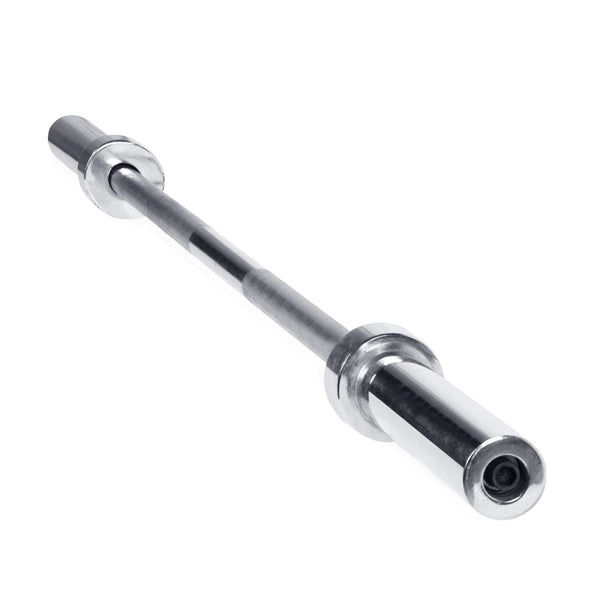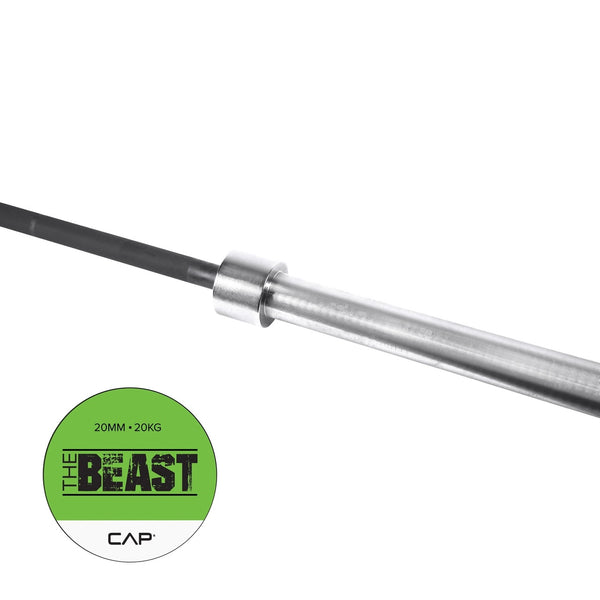Your Cart is Empty
June 13, 2023 2 min read
Barbells are a great way to get a full-body workout. They’re versatile, allowing you to do compound exercises that work multiple muscle groups at once. But like all exercise equipment, barbells come with certain safety risks. It’s important to understand the safety guidelines for using barbells in order to reduce your risk of injury.
Shop The Collection: BarbellsUsing proper form is essential when it comes to lifting barbells correctly and safely. When done correctly, barbell exercises can help you build strength and improve coordination. But if you use incorrect form, you increase your risk of injury. If you’re new to barbell training, consider working with a qualified trainer who can show you the correct form for each exercise.
 Shop The Gear: CAP Barbell Olympic Chrome Bar, 6-ft, $95.99 USD
Shop The Gear: CAP Barbell Olympic Chrome Bar, 6-ft, $95.99 USD
Be sure to keep your back straight while lifting and focus on using the muscles in your legs and core. This will help keep your body stable and balanced. Additionally, make sure you’re using a weight that you can handle; don’t try to lift too heavy or push yourself beyond your limits.
Shop The Collection: Weight PlatesBefore beginning any strength training routine, it’s important to warm up your muscles. A proper warm-up can help improve flexibility, increase blood flow to the muscles, and reduce the risk of injury. Try doing dynamic stretches—such as lunges, squats, and arm circles—for 5-10 minutes. This will help prime your body for the exercise ahead.
 Shop The Gear: CAP Barbell "THE BEAST" Olympic Bar, 1000-LB Capacity, 7-ft, $145.99 USD
Shop The Gear: CAP Barbell "THE BEAST" Olympic Bar, 1000-LB Capacity, 7-ft, $145.99 USD
If you’re lifting heavier weights, it’s important to have someone spot you. A spotter can help ensure you’re using proper form and won’t get injured if you can’t complete the lift. Make sure your spotter has experience spotting for barbell lifts and knows how to properly spot you.
Your spotter should be standing close enough to you to assist if needed, but far enough away that you can still move freely and maintain your balance. Additionally, they should not be pushing or pulling you while you’re exercising. Their job is to be there in case you need help and provide encouragement.
It’s important to maintain your barbells and other exercise equipment regularly. Inspect your barbells before each use and make sure they’re free from cracks or other damage. Be sure to also check the collars and plates for any signs of wear and tear. Replace any damaged parts as soon as possible.
Keep your barbells clean and store them in a dry place. Avoid storing them in damp or humid environments, as this can cause rust and corrosion. When transporting your barbells, use a cart or dolly to prevent them from being dropped or accidentally damaged.
Following the safety guidelines for using barbells is essential for reducing your risk of injury. Make sure to use proper form, warm up beforehand, have someone spot you if you’re lifting heavy weights, and maintain your barbells properly. By following these guidelines, you’ll have a safe and effective barbell workout.